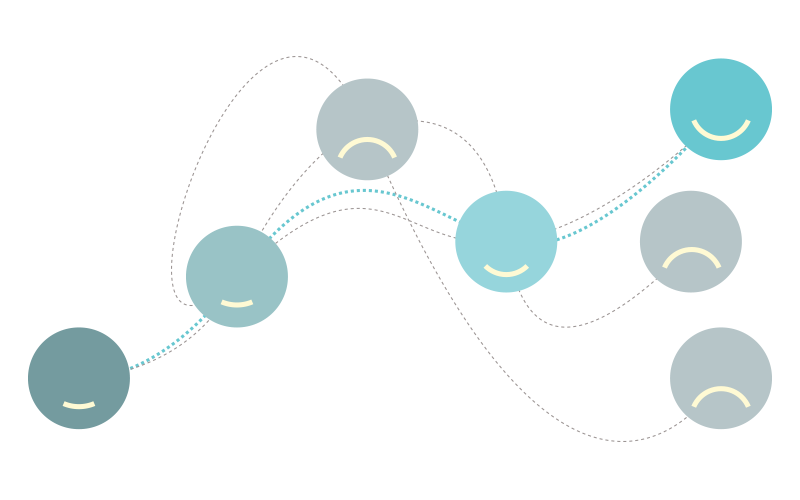See the bigger picture. Think customer experience.

User experience and user interface design are pieces of a bigger customer experience puzzle
Most designers and developers of digital products have wrestled with terms such as ‘user experience’ and ‘user interface’. These two terms have been wrongly used, contributing to their cryptic meaning driving any of us increasingly confused. As these practices evolved and more information was popularized, clear differences emerged.
What is user experience ?
There is not one authoritative answer. The definition changes depending on the context. One thing that can be agreed upon, is that it has to do with how users feel while using a product. Before we dive deeper into the emotional connections people develop with products, let’s define user experience versus user interface.
User experience vs user interface
User experience design (UXD) and user interface design (UI design) are not one in the same. User experience is how the user feels about using a product while user interface on the other hand, is what a person uses to interact with a product. Yes the interaction does affect the feeling but it isn’t the only thing that defines it. Other aspects like how the product looks and how compelled we are to use it, also contribute to how we feel about the product. By these definitions, UI design, visual design, interaction design and similar ideas are components of the user experience. Now if these ideas are a subset of the user experience, what bigger, more encompassing concept contains user experience?
Zoom out and see the bigger picture
Customer experience (CX) encompasses many other concepts, including user experience, which span across the customer life cycle. We can argue that customer experience starts with the first time the customer hears about the product. Whether it’s through advertising, direct marketing, social media or any other outreach program, the feelings evoked by the ad or communication inevitably shapes people’s perception of the product.
As a result of learning about the product, people interact with the website or talk with one of the service representatives. They are being exposed to another layer of the customer experience funnel. The action of buying a product or service; how people are charged, invoiced, walked through the sale process and even the box in which the product gets delivered in are all part of the customer experience. Everything they experience while visiting the office or store shapes customer experience; the comfort of the chairs, the scent and temperature of the room, the colour of the walls and the clarity of the signage. All of these elements affect the way a person feels about our business.
By now, you can probably keep expanding this list with elements familiar to your organization or business model. As long as it touches the customer, it is part of the customer experience. Whether you are a product manager, a web developer, a user interface or interaction designer, you should never look at what you do in isolation. To orchestrate a consistent and complete customer experience, you need to collaborate with your whole team (sales, marketing, operations, support…) to make sure that the effort you put towards making a product easy to use, attractive and engaging, are echoed across all touch points of the customer experience.